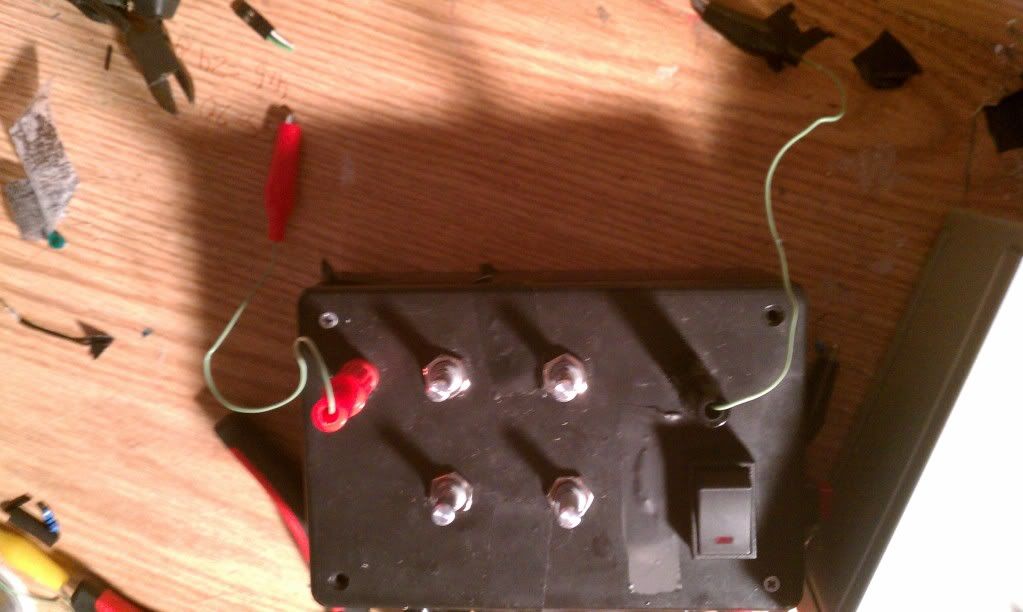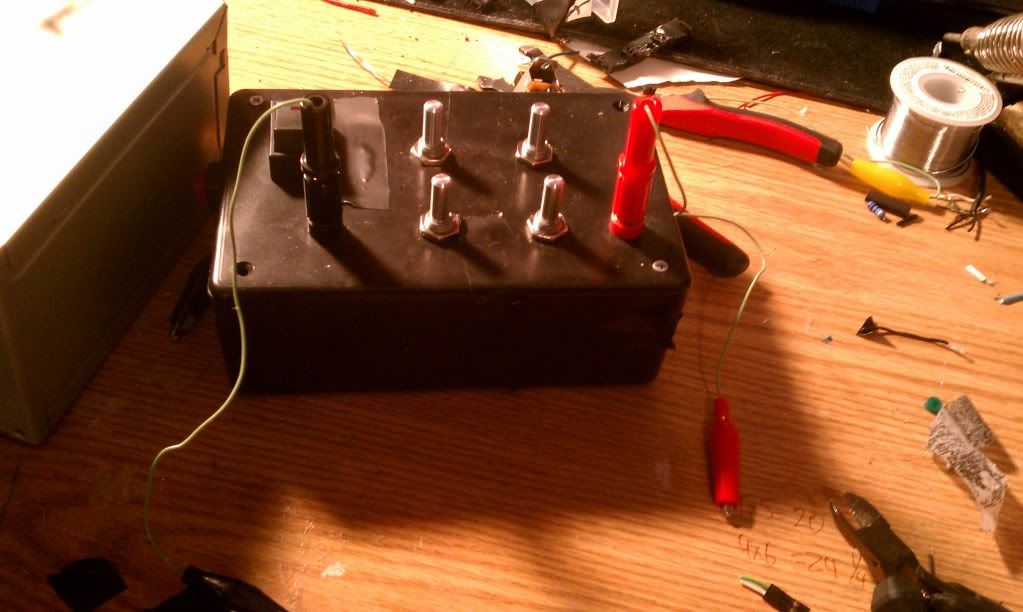- Joined
- May 10, 2011
- Messages
- 1,878
- Points
- 48
wa prettier than mine on the inside good job
:edit ill post pics in abit
:edit ill post pics in abit
Last edited:




wa prettier than mine on the inside good job
:edit ill post pics in abit


Haha, nice work!
Btw, the wire your using is pretty thin, you might need some 16 gauge or so. Even with 5 strands of 26 gauge im still getting significant voltage drops at around 5 amps.
Oh yeh, why are there 4 pots? Im guessing course and fine adjustment?
5 amps before it melts, maybe. Up to that point, you're generating increasing amounts of heat. The heat comes from voltage drop across the wire. The smaller the wire, the larger the voltage drop. You want to minimize voltage drop because not only does it produce unwanted heat, it also as the name suggests, drops voltage. You may get 5V at the end terminals under no load, but under heavy load, that might sag to 4.5V or lower. This defeats the purpose of using a voltage regulator.
The insulation (PVC/rubber/silicone) has little (if anything) to do with the current capacity of the wire. It's the cross-sectional area of the copper you want to look at. It's 26AWG, isn't it? If you plan to send 5A through it, you need a minimum of 22AWG. Bigger is better. Use this as a guide.
Indeed. Im experiencing voltage drops (0.5v) with 5 strands of 26 gauge wire. I'm planning on changing it over to 14/16 gauge.'
EDIT: Bennett, may I ask what regulators you used for your CC and CV?
I only grabbed two of 'em :\ The rest would have cluttered it up far too much... think it should be able to handle it?

